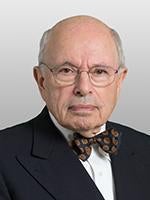Last week, a federal court reaffirmed its decision to hold an upcoming False Claims Act (“FCA”) trial in two parts, in what is the known instance of a court bifurcating the liability phase of a FCA trial.
The case, United States v. AseraCare, Inc., Civ. Action No. 2:12-CV-245-KOB (N.D. Alabama), concerns the alleged submission of false claims to Medicare for hospice benefits. The defendant, AseraCare, is a for-profit national chain of hospice providers. Like other similar organizations, AseraCare receives a significant amount of Medicare funds on behalf of individuals eligible to receive Medicare benefits. To be eligible for hospice care paid by Medicare, an individual must be certified by a physician as “terminally ill,” meaning that the individual has a life expectancy of six months or less. The Government alleges that AseraCare hid information from physicians in order to secure certifications of hospice eligibility for patients who were not terminally ill, making the claims the company submitted for Medicare reimbursement false. The Government also alleges that AseraCare had a general pattern and practice of obtaining false certifications, motivated by an interest in obtaining Medicare funds and more revenue.
In May, U.S. District Judge Karon Owen Bowdre granted AseraCare’s motion to try the case in two parts. The court agreed with AseraCare that the company would be prejudiced if the Government were allowed to present “pattern and practice” and motive evidence – used to demonstrate that false claims were submitted knowingly – at the same time it presented evidence that the claims were, in fact, false. Despite the Government’s argument that such action was unprecedented, the court ordered the trial to be separated into two phases: one phase on the falsity element of the FCA claim (i.e., whether each of the claims is “objectively false”); and a second phase on the remaining FCA elements, including the scienter element.
The court disagreed with the Government’s contention that the falsity and knowledge elements were “interwoven issues” that could not be tried separately. As the court explained: “The Government must show that each separate claim within a patient sample is objectively false. Falsity cannot be inferred by reference to AseraCare’s general corporate practice unrelated to specific patients.”
At the end of June, the court reaffirmed its earlier decision to bifurcate the trial when it denied a motion for reconsideration by the Government. The court rejected the Government’s argument that a split was inappropriate because no district court had ever bifurcated the elements of a FCA claim, explaining that bifurcation was within the court’s broad discretion under Federal Rule of Civil Procedure 42(b). The court also rejected the Government’s argument that bifurcation would result in lengthy disputes about whether each piece of evidence relates to falsity or knowledge. The court reiterated its prior order, stating that “a claim is either false or not without evidence of corporate practices related to that claim.”
The decision to bifurcate this case may relate to the court’s earlier acceptance of the Government’s use of sampling to establish the falsity of the claims at issue. To prove its allegations, the Government proposed to use a new practice of establishing FCA liability through statistical sampling. Rather than proving the falsity of each claim submitted, a Government expert analyzed a random sample of approximately 230 patients’ records from a pool of 2,181 patients. The Government alleges that 124 of the patients – approximately half of the sample – did not qualify for hospice benefits, based on its expert’s determination. The Government seeks to extrapolate from the sample to prove that approximately half of the 2,181 patients were ineligible.
In late 2014, the court authorized the use of sampling when it ruled on AseraCare’s motion for partial summary judgment on the claims outside the sample reviewed by the Government’s expert. The court denied the motion, stating that the statistical extrapolation evidence could be used to prove the falsity of the claims outside the sample set. United States v. AseraCare, Inc., 2014 WL 6879254, at *10 (N.D. Ala. Dec. 4, 2014).
The use of sampling and extrapolation to establish FCA liability (and not simply damages) raises questions of constitutionality under the Due Process Clause. The use of extrapolation arguably reduces the Government’s burden and magnifies the potential scope of liability and damages for the defendant. The court’s decision to isolate the falsity element may be viewed as a reaction to the Government’s use of sampling: if the government is allowed to extrapolate the falsity of a few claims to many, the court has taken steps to ensure that the few claims scrutinized are objectively false. Thus, as an increasing number of courts approve the use of sampling to establish FCA liability, bifurcation may offer defendants a strategy to ensure that the Government is held to its burden to establish the falsity of the claims at issue.
Those interested in FCA litigation should keep an eye on this case, which goes to trial in early August, to see if the defendant’s bifurcation strategy is ultimately effective. Bifurcation of the elements of liability could offer a powerful tool for FCA defendants, particularly in cases where the Government alleges a large number of false claims were submitted or seeks to use sampling. Whether to use such a tactic, however, must be carefully considered in light of the specific facts of each case and weighed against other strategies, such as a bellwether approach.




 />i
/>i

